Themed collection Editors collection: Metal Organic Frameworks as catalysts for water splitting and CO2 reduction

Perspectives on metal–organic frameworks with intrinsic electrocatalytic activity
This highlight article focuses on the rapidly emerging area of electrocatalytic metal–organic frameworks (MOFs) with a particular emphasis on those systems displaying intrinsic activity.
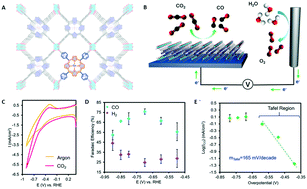
CrystEngComm, 2017,19, 4049-4065
https://doi.org/10.1039/C7CE00215G
Metal–organic frameworks with Lewis acidity: synthesis, characterization, and catalytic applications
In this highlight, we review the recent development in the design and synthesis of metal–organic frameworks with Lewis acidity, the characterization techniques of Lewis acid sites, and their applications in heterogeneous catalysis.
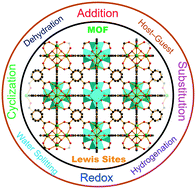
CrystEngComm, 2017,19, 4066-4081
https://doi.org/10.1039/C6CE02660E
Understanding metal–organic frameworks for photocatalytic solar fuel production
The fascinating chemical and physical properties of MOFs have recently stimulated exploration of their application for photocatalysis. Design guidelines for these materials in photocatalytic solar fuel generation can be developed by applying the right spectroscopic tools.
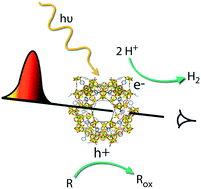
CrystEngComm, 2017,19, 4118-4125
https://doi.org/10.1039/C7CE00006E
Polymorphs of a copper coordination compound: interlinking active sites enhance the electrocatalytic activity of the coordination polymer compared to the coordination complex
A copper coordination polymer exhibits highly enhanced HER activity in neutral medium compared to a coordination complex with a similar coordination environment.
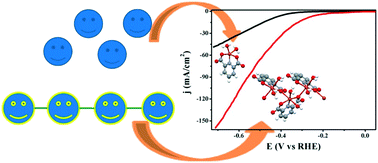
CrystEngComm, 2020,22, 425-429
https://doi.org/10.1039/C9CE01698H
Trinuclear Ni(II) oriented highly dense packing and π-conjugation degree of metal–organic frameworks for efficient water oxidation
Trinuclear nickel cluster based MOF shows highly denser crystal packing and π-conjugation degree as well as outstanding OER performance with an overpotential of 270 mV at 10 mA cm−2.

CrystEngComm, 2019,21, 5862-5866
https://doi.org/10.1039/C9CE00944B
Two metal–organic frameworks sharing the same basic framework show distinct interpenetration degrees and different performances in CO2 catalytic conversion
Two metal–organic frameworks having the same basic framework but different interpenetration degrees show different catalytic activities in CO2 cycloaddition reactions.
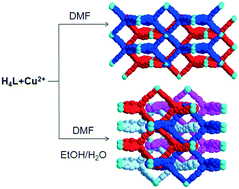
CrystEngComm, 2017,19, 4157-4161
https://doi.org/10.1039/C7CE00100B
Nanostructured ZnO as a structural template for the growth of ZIF-8 with tunable hierarchical porosity for CO2 conversion
We report a new approach to introduce hierarchical porosity into ZIF-8 by using three-dimensional nanostructured porous ZnO as a structural template.

CrystEngComm, 2017,19, 4147-4151
https://doi.org/10.1039/C6CE02549H
Covalently anchoring cobalt phthalocyanine on zeolitic imidazolate frameworks for efficient carbon dioxide electroreduction
Transformation of CO2 into fuels has drawn great attention due to increasing carbon emission in recent years.
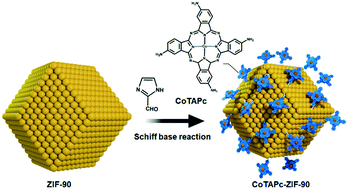
CrystEngComm, 2020,22, 1619-1624
https://doi.org/10.1039/C9CE01517E
The Co2+/Ni2+ ion-mediated formation of a topochemically converted copper coordination polymer: structure-dependent electrocatalytic activity
The presence of Co2+/Ni2+ ions strongly influenced the formation of copper coordination polymers that showed a structure-dependent hydrogen evolution reaction catalytic activity.
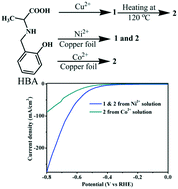
CrystEngComm, 2019,21, 6552-6557
https://doi.org/10.1039/C9CE01178A
Metal–organic frameworks based on tetraphenylpyrazine-derived tetracarboxylic acid for electrocatalytic hydrogen evolution reaction and NAC sensing
Tetraphenylpyrazine-derived tetracarboxylic acid-based new MOFs and their promising applications in the electrocatalytic hydrogen evolution reaction.

CrystEngComm, 2019,21, 494-501
https://doi.org/10.1039/C8CE01868E
Synthesis of core–shell ZIF-67@Co-MOF-74 catalyst with controllable shell thickness and enhanced photocatalytic activity for visible light-driven water oxidation
Core–shell ZIF-67@Co-MOF-74 catalysts with improved photocatalytic properties were synthesized via the ligand exchange method.

CrystEngComm, 2018,20, 7659-7665
https://doi.org/10.1039/C8CE01266K
Polyoxometalate-based metal–organic framework loaded with an ultra-low amount of Pt as an efficient electrocatalyst for hydrogen production
A low-Pt content polyoxometalate-based metal–organic framework (Pt@POMOF-1/KB) displays a highly efficient performance towards the hydrogen evolution reaction.
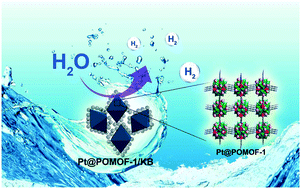
CrystEngComm, 2018,20, 5387-5394
https://doi.org/10.1039/C8CE01151F
Improved conductivity of a new Co(II)-MOF by assembled acetylene black for efficient hydrogen evolution reaction
Metal–organic frameworks (MOFs) incorporating different metal nanoparticles or conductive additives are expected to possess desirable catalytic performance.

CrystEngComm, 2018,20, 4804-4809
https://doi.org/10.1039/C8CE00921J
Novel stable metal–organic framework photocatalyst for light-driven hydrogen production
A novel stable Dye-based Dy-MOF exhibits efficient photocatalytic activity for hydrogen generation.
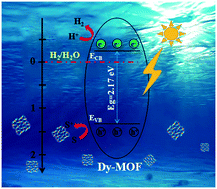
CrystEngComm, 2018,20, 3228-3233
https://doi.org/10.1039/C8CE00386F
About this collection
This Editor’s collection, guest edited by Editorial Board member Tong-Bu Lu, highlights the recent papers in CrystEngComm which are related to Metal Organic Framework (MOFs) based catalysts for water splitting and CO2 reduction.
Recently, water splitting and CO2 reduction have drawn much interest due to the global energy shortage and climate deterioration caused by greenhouse gas emissions. MOFs possess defined structures and unsaturated metal coordination catalytic sites, so it is beneficial to understand the structure–catalytic activity relationship. In addition, the catalytic activity of MOFs can be optimized by tuning the structures of MOFs, as well as the post-decorating of molecular/nanoparticles within their channels or frameworks. However, the stability of MOFs after catalysis must be checked to confirm they act as the actual catalyst, as under strongly acidic or basic catalytic conditions, MOFs may decompose to release metal ions or metal oxides as the catalytic species.